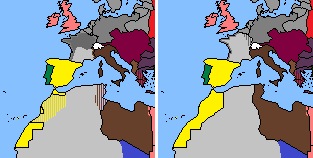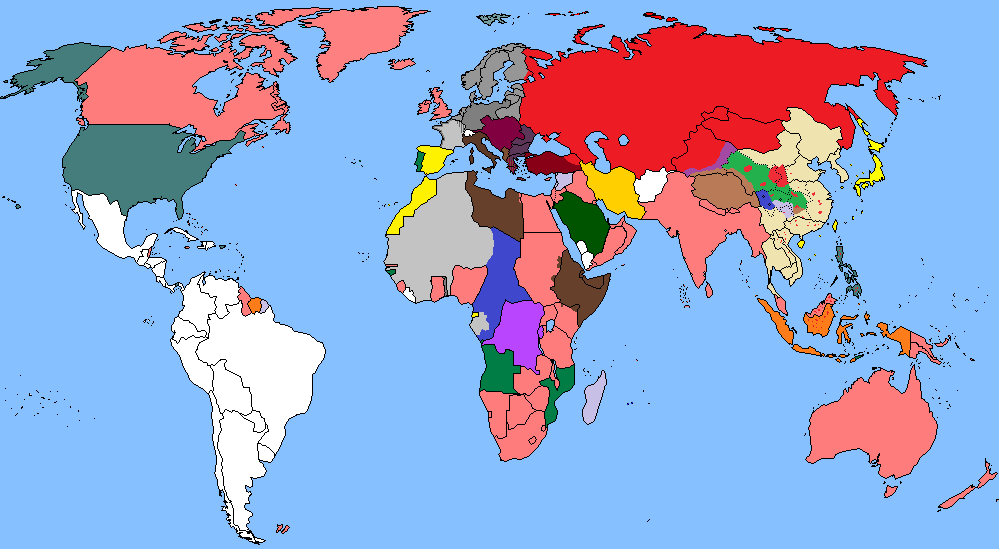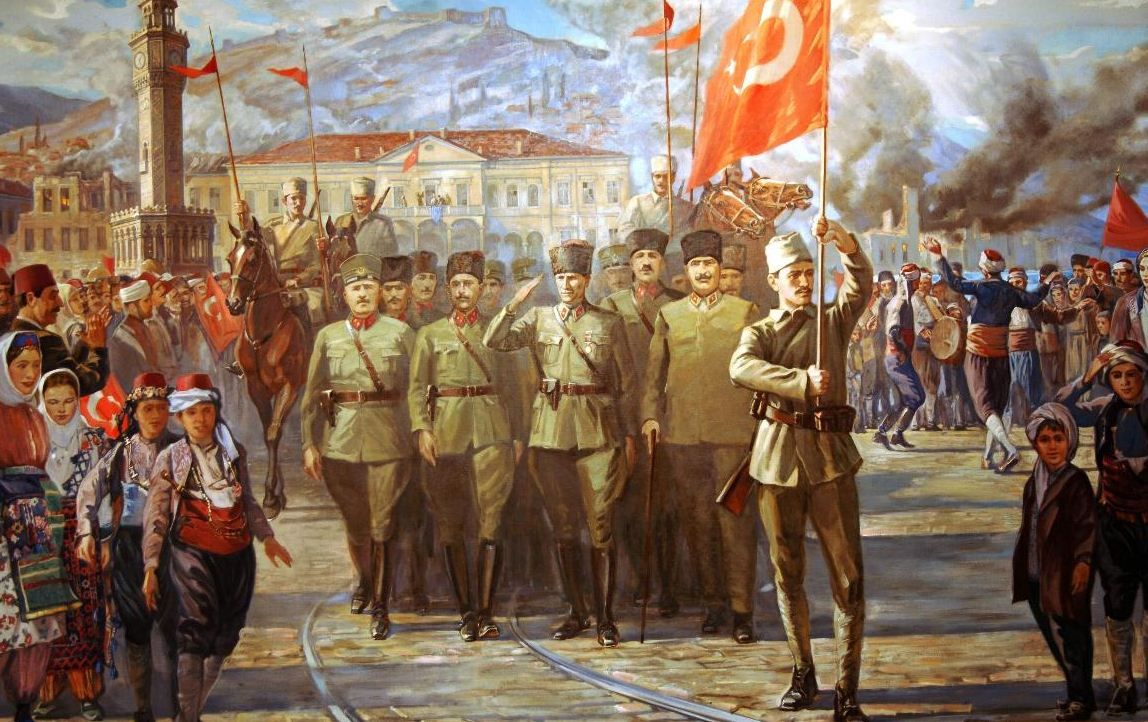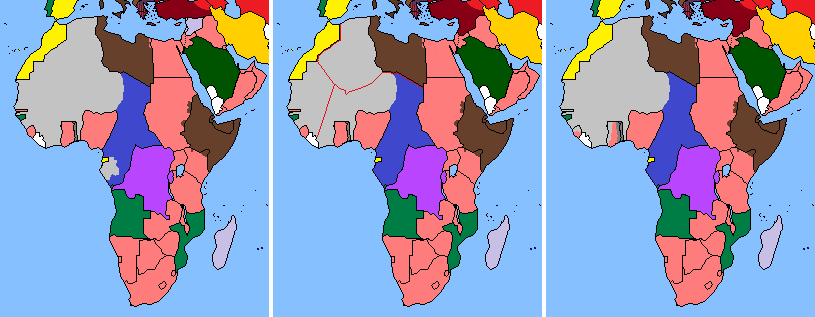Chapter 53: The planning for the surprise attack on Pearl Harbor:
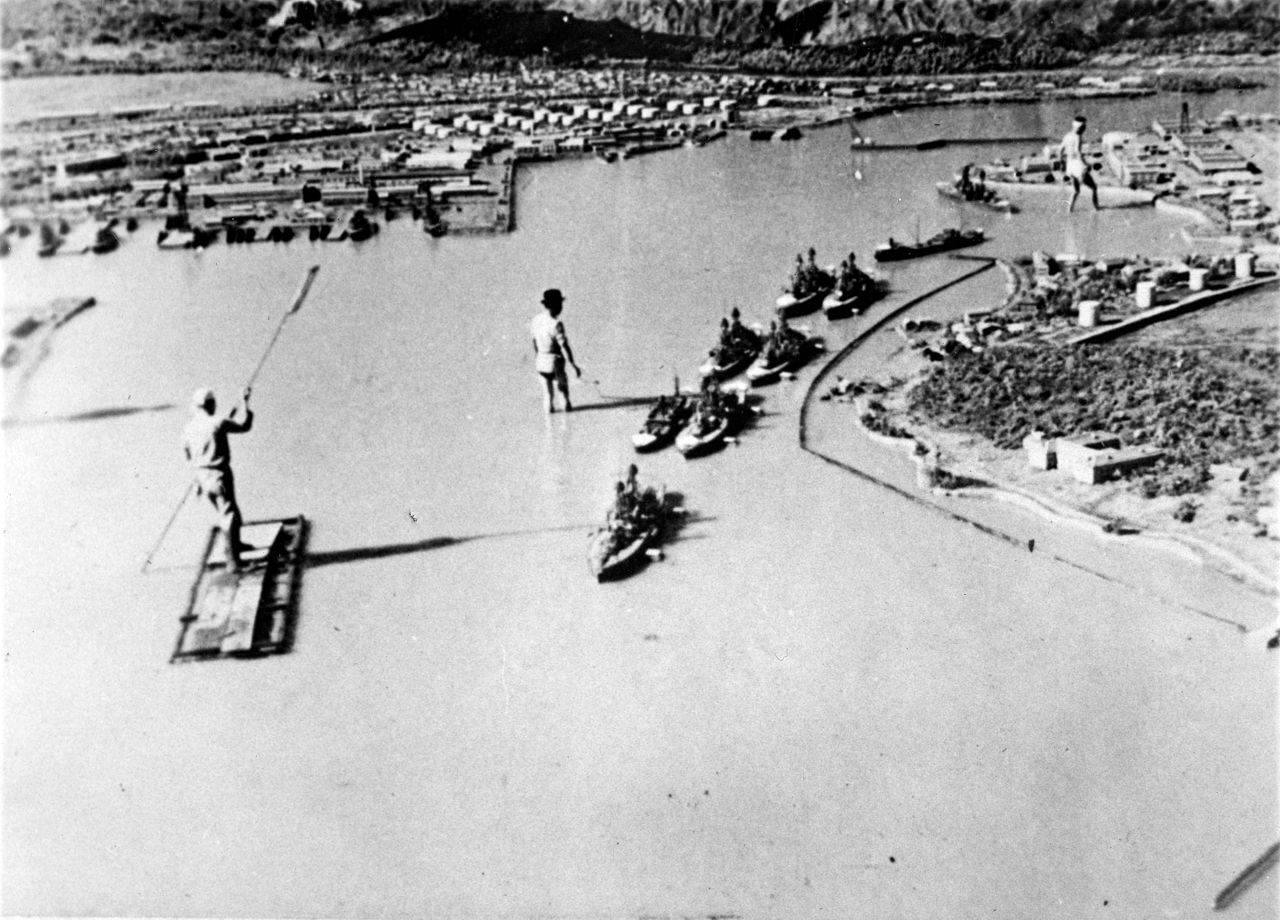
War between Japan and the United States had been a possibility that each nation had been aware of (and developed contingency plans for) since the 1920s, though tensions did not begin to grow seriously until Japan's 1931 invasion of Manchuria and even further after Japan's 1940 invasion and “liberation” of French Indochina. Over the next decade after Manchuria, Japan continued to expand into China, leading to all-out war between the Chinese under Chiang and Wang with heavy japanese support for the later one. Japan spent considerable effort trying to isolate China and achieve sufficient resource independence to attain victory on the mainland; the "Southern Operation" was designed to assist these efforts. From December 1937, events such as the Japanese attack on USS Pana and the Allison incident as well as the war-crimes committed in china by expeditionary troops of the Co-Prosperity Sphere swung public opinion in the West against Japan. Fearing Japanese expansion and complete dominance over China, the United States, the United Kingdom, and France provided loan assistance for war supply contracts to China. In 1940, Japan invaded and “freed” French Indochina in an effort to control supplies reaching China and use the region for their own needs of resources and strategic and tactical uses. The United States halted shipments of airplanes, parts, machine tools and aviation gasoline to Japan, which was perceived by Japan as an unfriendly act. The U.S. did not stop oil exports to Japan at that time in part because prevailing sentiment in Washington was that such an action would be an extreme step that Japan would likely consider a provocation, given Japanese dependence on U.S. Oil.
Early in 1941, President Franklin D. Roosevelt moved the Pacific Fleet to Hawaii from its previous base in San Diego and ordered a military buildup in the Philippines in the hope of discouraging Japanese aggression in the Far East. Because the Japanese high command was (mistakenly) certain that any attack on the UK's and Dutch Southeast Asian colonies, including Singapore, would bring the U.S. into war, a devastating preventive strike appeared to be the only way to avoid U.S. naval interference. An invasion of the Philippines was also considered necessary by Japanese war planners. The U.S. War Plan Orange had envisioned defending the Philippines with a 40,000-man elite force. This was opposed by Douglas MacArthur, who felt that he would need a force ten times that size, and was never implemented. By 1941, U.S. planners anticipated abandonment of the Philippines at the outbreak of war and orders to that effect were given in late 1941 to Admiral Thomas Hart, commander of the Asiatic Fleet. The U.S. ceased oil exports to Japan in July 1941, following Japanese expansion into French Indochina after the Fall of France, in part because of new American restrictions on domestic oil consumption. This in turn caused the Japanese to proceed with plans to take the Dutch East Indies, an oil-rich territory. On August 17, Roosevelt warned Japan that the U.S. was prepared to take steps against Japan and the Co-Prosperity Sphere if they attacked "neighboring countries". The Japanese were faced with the option of either withdrawing from China and losing face or seizing and securing new sources of raw materials in the resource-rich, European-controlled colonies of Southeast Asia. At the same time the Imperial Japanese Navy proposed to go after the European and American Colonies in Southeast Asia, but the Imperial Japanese Army still supported a attack on the Soviet Union (that was occupied with the Axis Central Powers in what soon looked to be a direct war between both powers) and Mongolia, to finally cut off the last supplies for the Chinese United Front to finally win the Chinese Civil War for the Co-Prosperity Sphere.
Japan and the U.S. engaged in negotiations during the course of 1941 in an effort to improve relations. During these negotiations, Japan offered to withdraw from most of China and Indochina when peace was made with the Chiang Nationalist government in favor of Wang's Nationalist government, and not to discriminate in trade provided all other countries reciprocated. Washington rejected these proposals. Japanese Prime Minister Konoye then offered to meet with Roosevelt, but Roosevelt insisted on coming to an agreement before any meeting. The U.S. ambassador to Japan repeatedly urged Roosevelt to accept the meeting, warning that it was the only way to preserve the conciliatory Konoye government and peace in the Pacific. His recommendation was not acted upon. The Konoye government collapsed the following month when the Japanese military refused to agree to the withdrawal of all troops from China. Japan's final proposal, on November 20, offered to withdraw their forces from southern Indochina and not to launch any attacks in Southeast Asia provided that the U.S., the UK, and the Netherlands ceased aiding Chiang's China no longer, neither with supplies nor diplomatically, and lifted all their sanctions against Japan. The American counter-proposal of November 26 (November 27 in Japan) (the Hull note) required Japan to evacuate all of China without conditions and conclude non-aggression pacts with Pacific powers. However the day before the Hull Note was delivered, on November 26 in Japan, the main Japanese attack fleet was supposed to left port for Pearl Harbor.
Preliminary planning for an attack on Pearl Harbor to protect the move into the "Southern Resource Area" (the Japanese term for the Dutch East Indies and Southeast Asia generally) had begun very early in 1941 under the auspices of Admiral Isoroku Yamamoto, then commanding Japan's Combined Fleet. He won assent to formal planning and training for an attack from the Imperial Japanede Navy General Staff only after much contention with Naval Headquarters, including a threat to resign his command. Full-scale planning was underway by early spring 1941, primarily by Rear Admiral Ryunosuke Kusaka, with assistance from Captain Minoru Genda and Yamamoto's Deputy Chief of Staff, Captain Kameto Kuroshima. The planners studied the 1940 British air attack on the Italian fleet at Tarento intensively.
Over the next several months, pilots were trained, equipment was adapted, and intelligence was collected. Japanese citizens in Hawaii and Japanese Merchant Ships supported them with intel and even brought Japanese spies to the area. Thanks to that the Japanese were able to create a very detailed Pearl Harbor Sandpit model and even trained in a Japanese bay that had very close resemblance to the target harbor in Hawaii. Despite all these preparations, Emperor Hirohito did not approve the attack plan until November 5, after the third of four Imperial Conferences called to consider the matter. Final authorization was not given by the emperor until December 1, after a majority of Japanese leaders advised him the "Hull Note" would "destroy the fruits of the Co-Prosperity Sphere incident in China, endanger and undermine Japanese control of Manchukuo and Chosen."
By late 1941, many observers believed that hostilities between the U.S. and Japan were imminent. A Gallup poll just before the attack on Pearl Harbor found that 52% of Americans expected war with Japan, 27% did not, and 21% had no opinion. While U.S. Pacific bases and facilities had been placed on alert on many occasions, U.S. officials doubted Pearl Harbor would be the first target; instead, they expected the Philippines would be attacked first. This presumption was due to the threat that the air bases throughout the country and the naval base at Manila posed to sea lanes, as well as to the shipment of supplies to Japan from territory to the south. They also incorrectly believed that Japan was not capable of mounting more than one major naval operation at a time and were soon proven wrong.
The Japanese attack had several major aims. First, it intended to destroy important American fleet units, thereby preventing the Pacific Fleet from interfering with Japanese conquest of the Dutch East Indies and Malaya and to enable Japan to conquer Southeast Asia without interference. Second, it was hoped to buy time for Japan to consolidate its position and increase its naval strength before shipbuilding authorized by the 1940 Vinson-Walsh Ast erased any chance of victory. Third, to deliver a blow to America's ability to mobilize its forces in the Pacific, battleships were chosen as the main targets, since they were the prestige ships of any navy at the time. Finally, it was hoped that the attack would undermine American morale such that the U.S. government would drop its demands contrary to Japanese interests, and would seek a compromise peace with Japan. Striking the Pacific Fleet at anchor in Pearl Harbor carried two distinct disadvantages: the targeted ships would be in very shallow water, so it would be relatively easy to salvage and possibly repair them; and most of the crews would survive the attack, since many would be on shore leave or would be rescued from the harbor. A further important disadvantage would be the absence from Pearl Harbor of all three of the U.S. Pacific Fleet's aircraft carriers (Enterprise, Lexington and Saratoga).
IJN top command was so imbued with Admiral Mahan's "decisive battle" doctrine (especially that of destroying the maximum number of battleships) that, despite these concerns, Yamamoto decided to press ahead. Japanese confidence in their ability to achieve a short, victorious war also meant other targets in the harbor, especially the navy yard, oil tank farms, and submarine base, would most likely be ignored, since—by their thinking—the war would be over before the influence of these facilities would be felt. Other Japanese Admirals demanded that these targets would be included for massive damage and to increase the shock and crippling this attack was suppose to leave the United States in. The IJA still opposed the overall plan of the IJN to attack Pearl Harbor and favored to focus on the Soviet Union in Northern and Central Asia and China, as well as the British Colonies of Burma and India.








